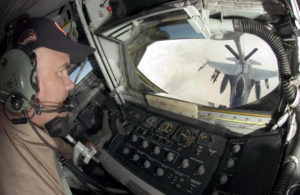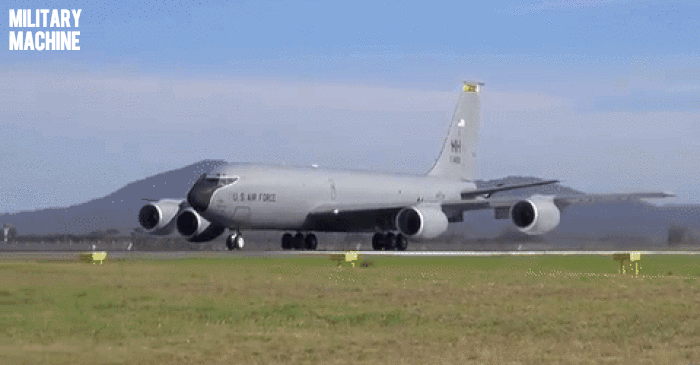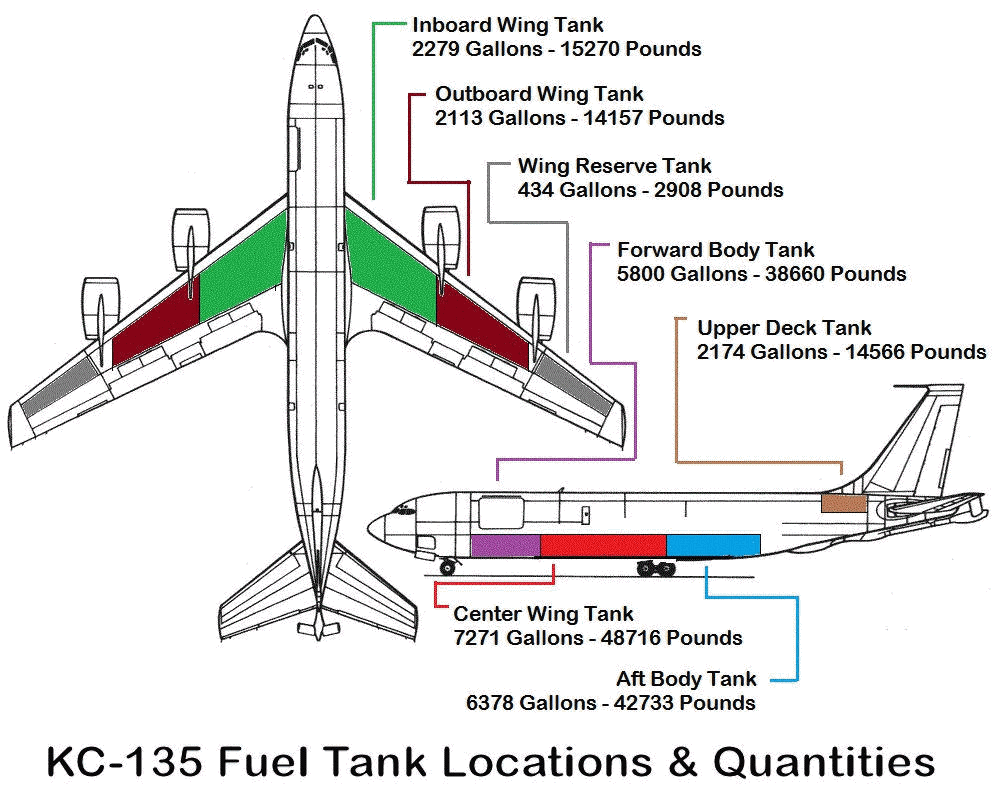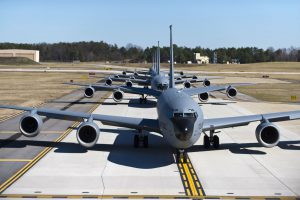Boeing KC-135 Stratotanker Force Multiplier
At first glance, Boeing’s KC-135 Stratotanker may seem like a humble flying gas station, but this unarmed aircraft is one of the most powerful “force multipliers” in the US Air Force’s entire arsenal. Since 1957, these tankers have given America, and NATO, the ability to project combat air power anywhere around the world at a moment’s notice, without requiring vulnerable forward operating bases. And that’s just the base model. Several game-changing reconnaissance and electronic warfare variants have been created from this versatile frame, including the EC-135 “Looking Glass” airborne command center of Cold War and Hollywood fame.
KC-135 History:
The KC-135 was first introduced in 1957, it was not only the largest aerial refueler in the Air Force, but also the world’s first jet-powered tanker. Initially delivered to the Strategic Air Command and intended to support nuclear-equipped B-52 bombers during the Cold War, the Stratotanker soon made its lasting mark by supporting conventional forces.

NATO’s Lifeline:
Indeed, some historians argue that these modest tankers were as much a vital element of America’s deterrent as our nuclear weapon arsenal. Throughout the Cold War, a crucial lynchpin to NATO’s defense strategy was keeping open an “air bridge” between the United States and Europe in the event of war. If this resupply and reinforcement bridge were ever broken, the tide of battle in Western Europe would have likely swung in the Soviet Union’s favor.

Force Multiplier:
The transports had no problem skipping “across the pond” on internal fuel stores, but the lumbering cargo planes would have been incredibly vulnerable to Soviet interception over the North Atlantic. Their fighter escorts just did not have such long legs. However, thanks to the wide-scale deployment of Stratotankers, NATO would have been able to keep a wall of protective fighters in the air and operating far beyond their unrefueled ranges. This strategic “force multiplier” capability made any armed aggression against the West seem far less likely to succeed.
The KC-135’s ability to multiply other aircraft’s range and endurance, and hence lethality, was put to extensive use during the Vietnam War, with Stratotankers conducting 813,000 mid-air refuelings. In the Persian Gulf War, the tankers provided the bulk of refueling services for the Coalition, totaling 18,700 hookups with aircraft from more than a dozen nations.

KC-135 Fuel Capacity:
With the help of extensive performance upgrades to this 60-year-old flight frame, the Stratotanker is still the premier tanker in the US and several other nations’ inventories. The KC-135’s unique design allows it to carry 200,000 pounds of fuel, enough to refuel 11 empty F-22’s, while also hauling up to 83,000 pounds of cargo and personnel in an extra storage bay above the fuel tanks.

Supporting the Long Arm of Justice:
But statistics obscure this plane’s greatest contribution to world peace – providing the American president with options to deal with rapidly developing threats in far corners of the globe. Thanks to the forward deployment of hundreds of Stratotankers, the US can project massive combat power, be it strike aircraft or ground troops, from their bases inside the United States in a matter of hours.
The certain knowledge that US bombers or Special Forces can strike non-stop from another continent has given many potential aggressors a moment of pause. In the post-Cold War world, the unarmed and unassuming KC-135 still serves as a powerful and practical deterrent. One that’s perhaps even more feared than any nuclear weapon.
See KC-135 Specifications
| Power Plant: CFM International CFM-56 turbofan engines |
| Primary Function: Aerial refueling and airlift |
| Prime Contractor: The Boeing Company |
| Thrust: 21,634 pounds each engine |
| Wingspan: 130 feet, 10 inches (39.88 meters) |
| Length: 136 feet, 3 inches (41.53 meters) |
| Height: 41 feet, 8 inches (12.7 meters) |
| Speed: 530 miles per hour at 30,000 feet (9,144 meters) |
| Ceiling: 50,000 feet (15,240 meters) |
| Range: 1,500 miles (2,419 kilometers) with 150,000 pounds (68,039 kilograms) of transfer fuel; ferry mission, up to 11,015 miles (17,766 kilometers) |
| Maximum Takeoff Weight: 322,500 pounds (146,285 kilograms) |
| Maximum Transfer Fuel Load: 200,000 pounds (90,719 kilograms) |
| Maximum Cargo Capability: 83,000 pounds (37,648 kilograms), 37 passengers |
| Pallet Positions: 6 |
| Crew: Three: pilot, co-pilot and boom operator. Some KC-135 missions require the addition of a navigator. The Air Force has a limited number of navigator suites that can be installed for unique missions. Aeromedical Evacuation Crew: A basic crew of five (two flight nurses and three medical technicians) is added for aeromedical evacuation missions. Medical crew may be altered as required by the needs of patients. |
| Unit Cost: $39.6 million (fiscal 98 constant dollars) |
| Date Deployed: August 1956 |
| Inventory: Active duty, 167; Air National Guard, 180; Air Force Reserve, 67 (2016) |

